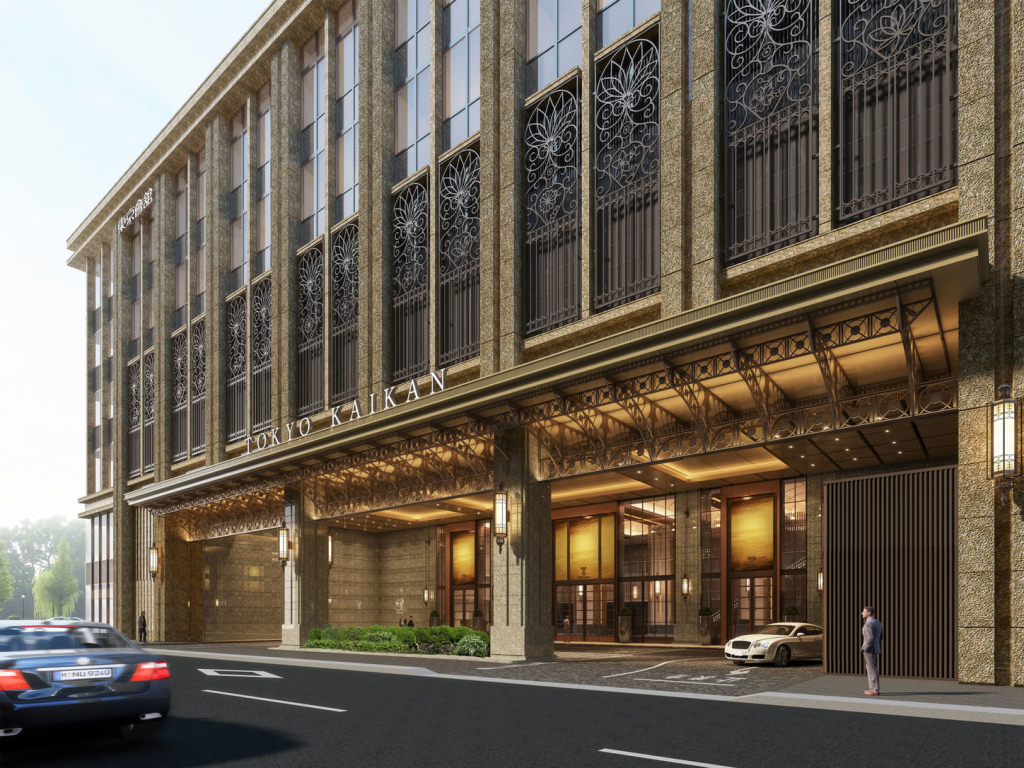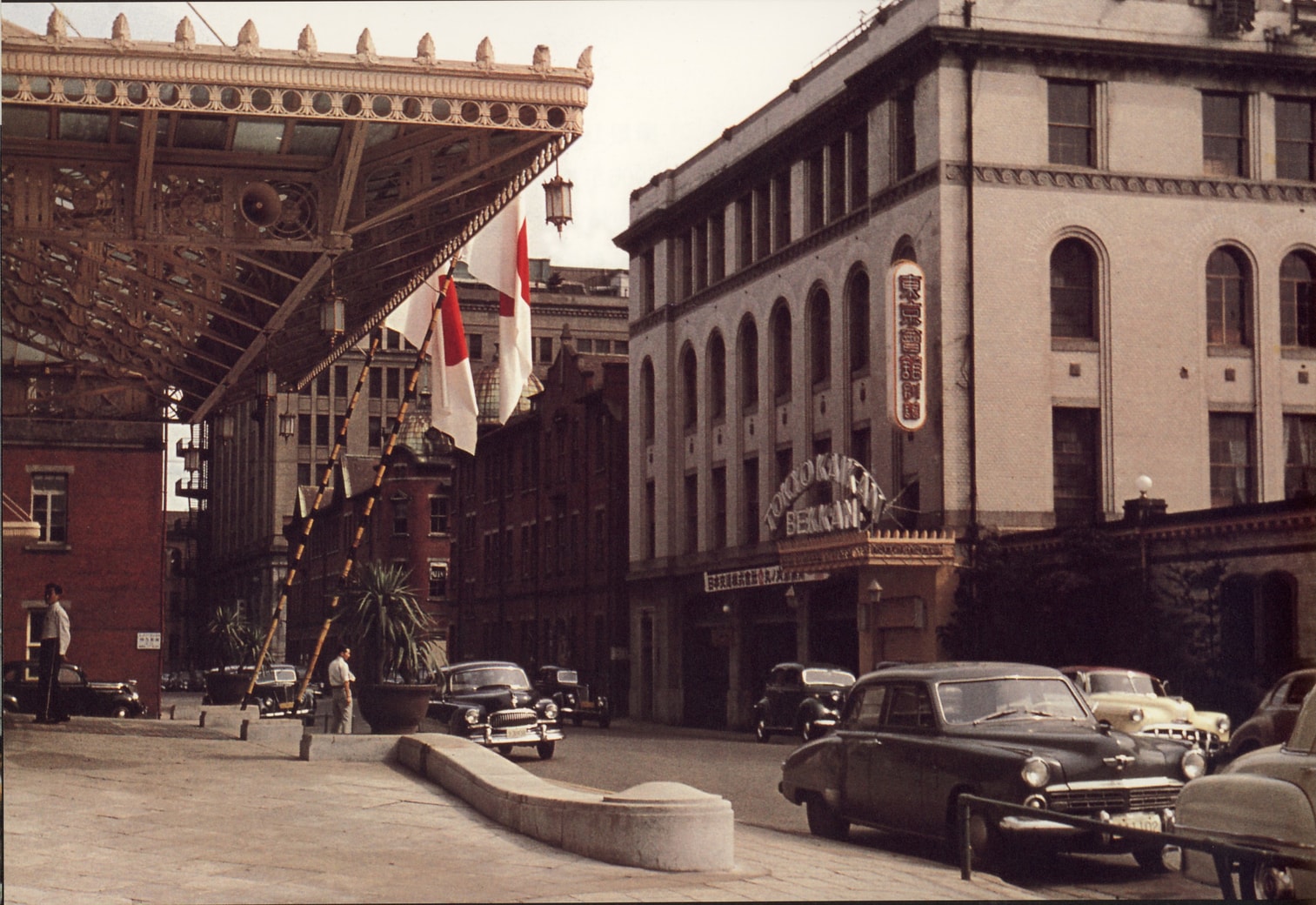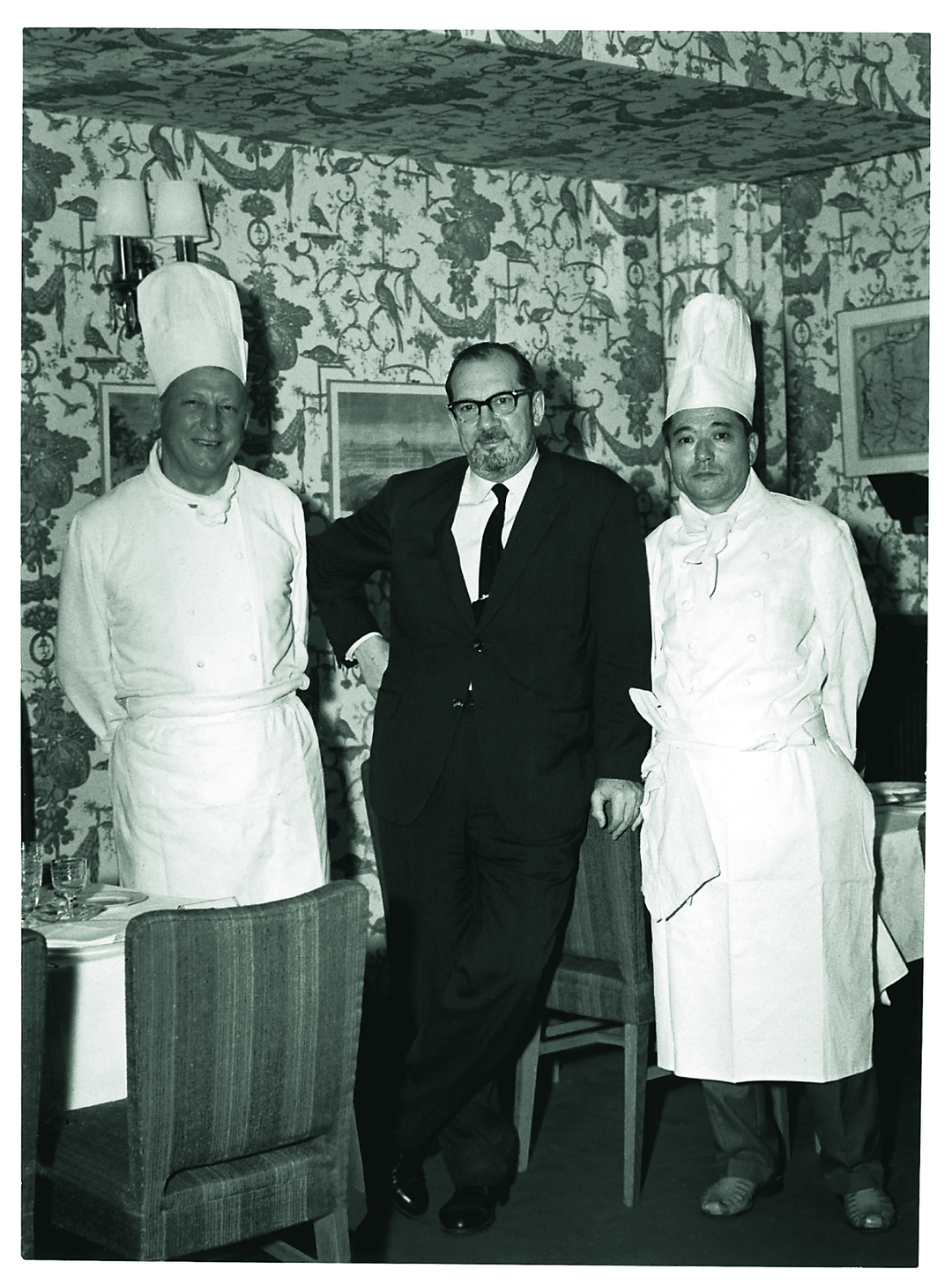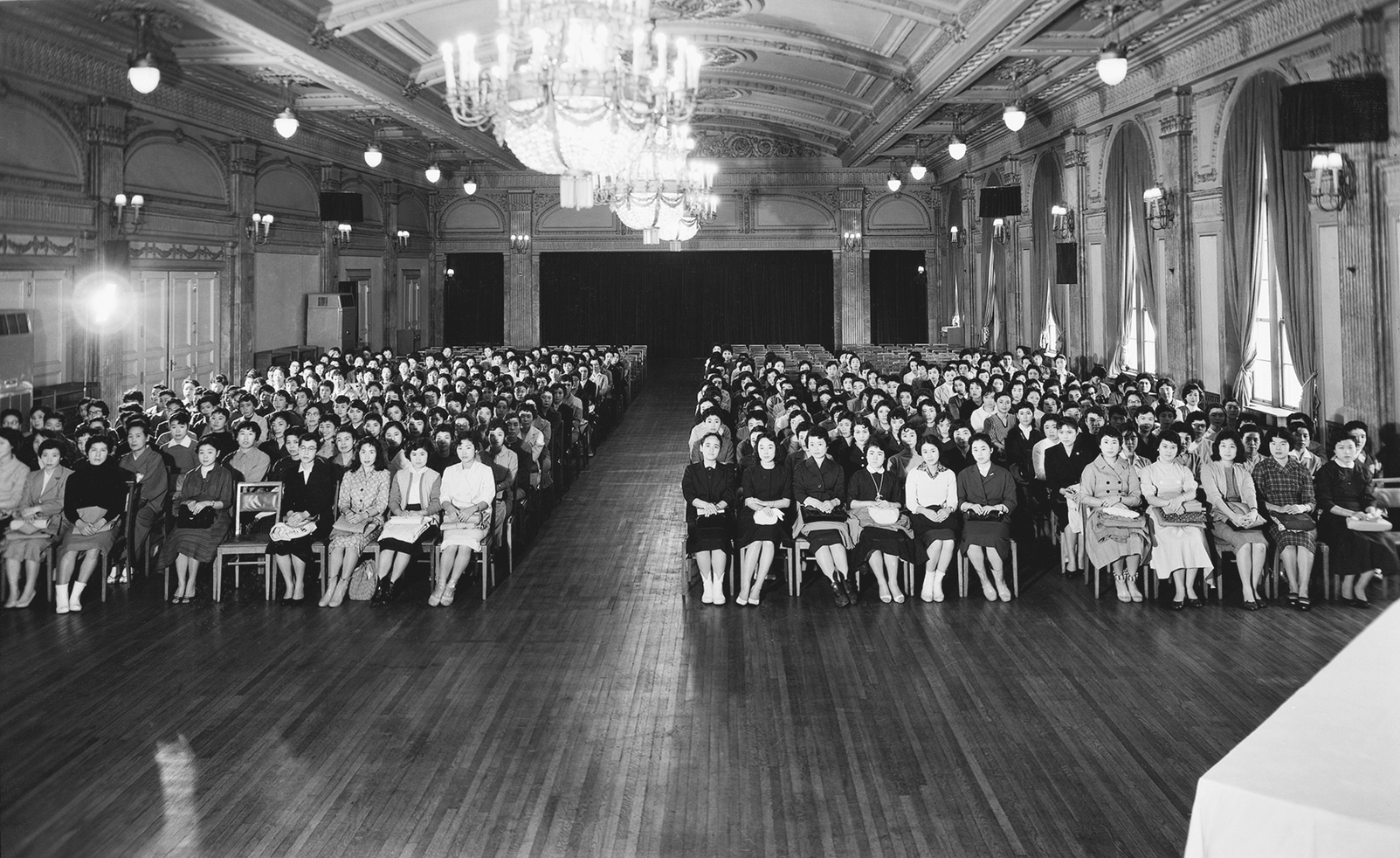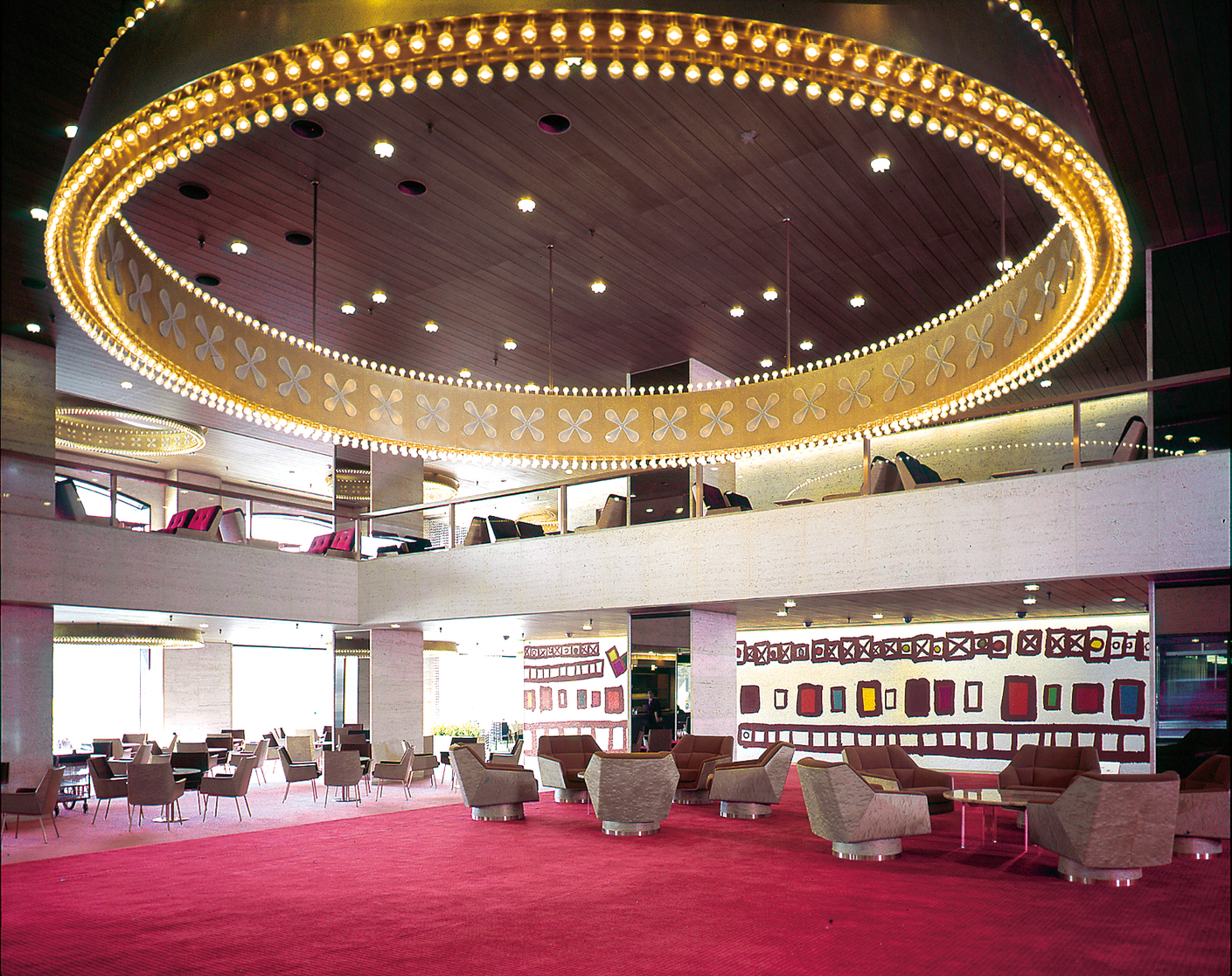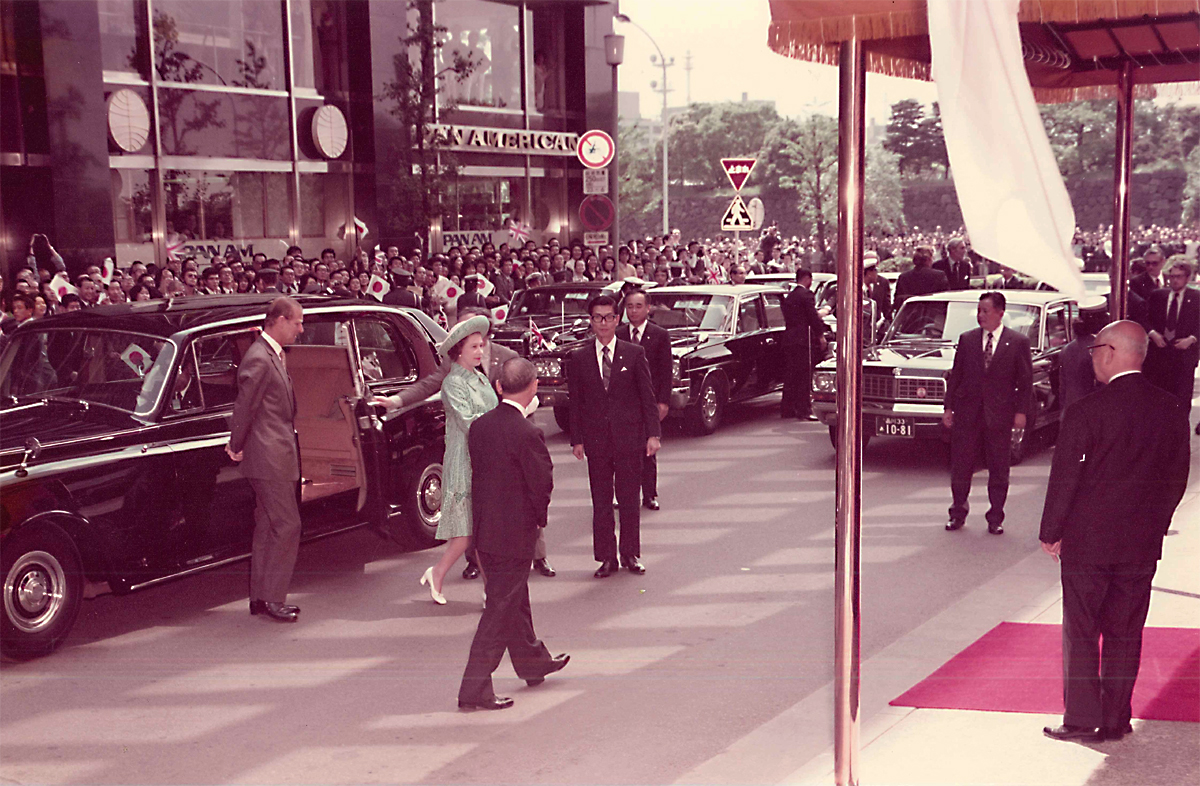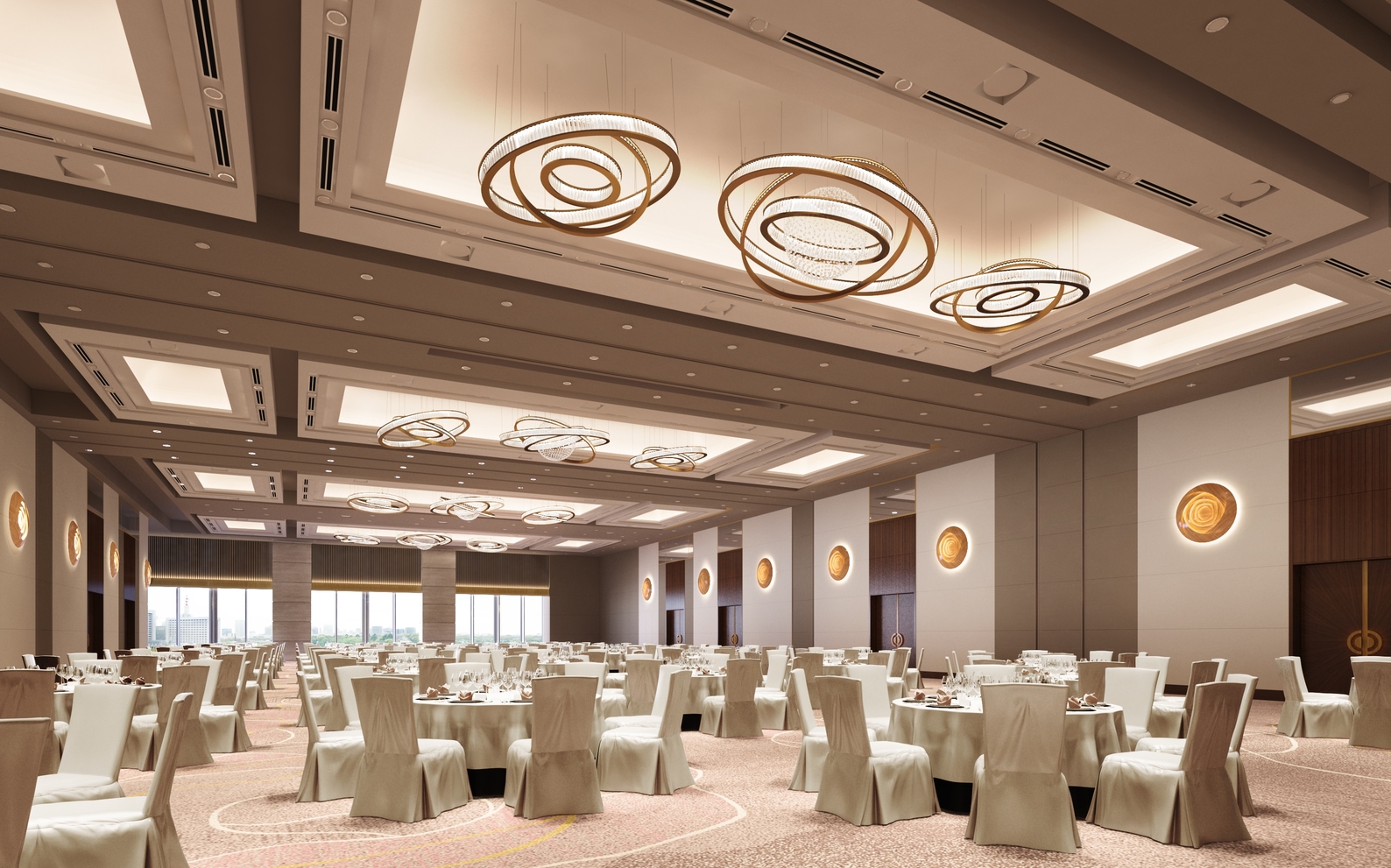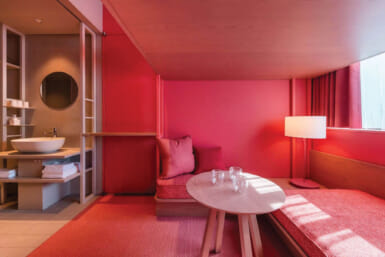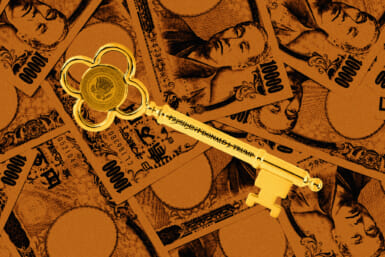One of Tokyo’s most beloved event halls and networking spaces, Tokyo Kaikan, will reopen on January 8, 2019, after being rebuilt and undergoing a thorough design overhaul. The hall boasts an illustrious history of almost 100 years of hosting intellectuals, authors, and other creatives who gathered here to discuss ideas as they dined. We look through a timeline of the hall’s astounding past before looking at its future when it opens next year.
1922-1927: Grand Opening and the Great Kanto Earthquake
Tokyo Kaikan opened its doors in 1922 with grand designs to be a place for people to gather and connect, as well as get a taste of Western culture. It was a spectacular building with cream tile and elaborate ironworks, with no expense spared. Unfortunately, the Great Kanto Earthquake hit the following year and the damage to Tokyo Kaikan was extensive. It took four years of repairs before the building could open again in 1927.
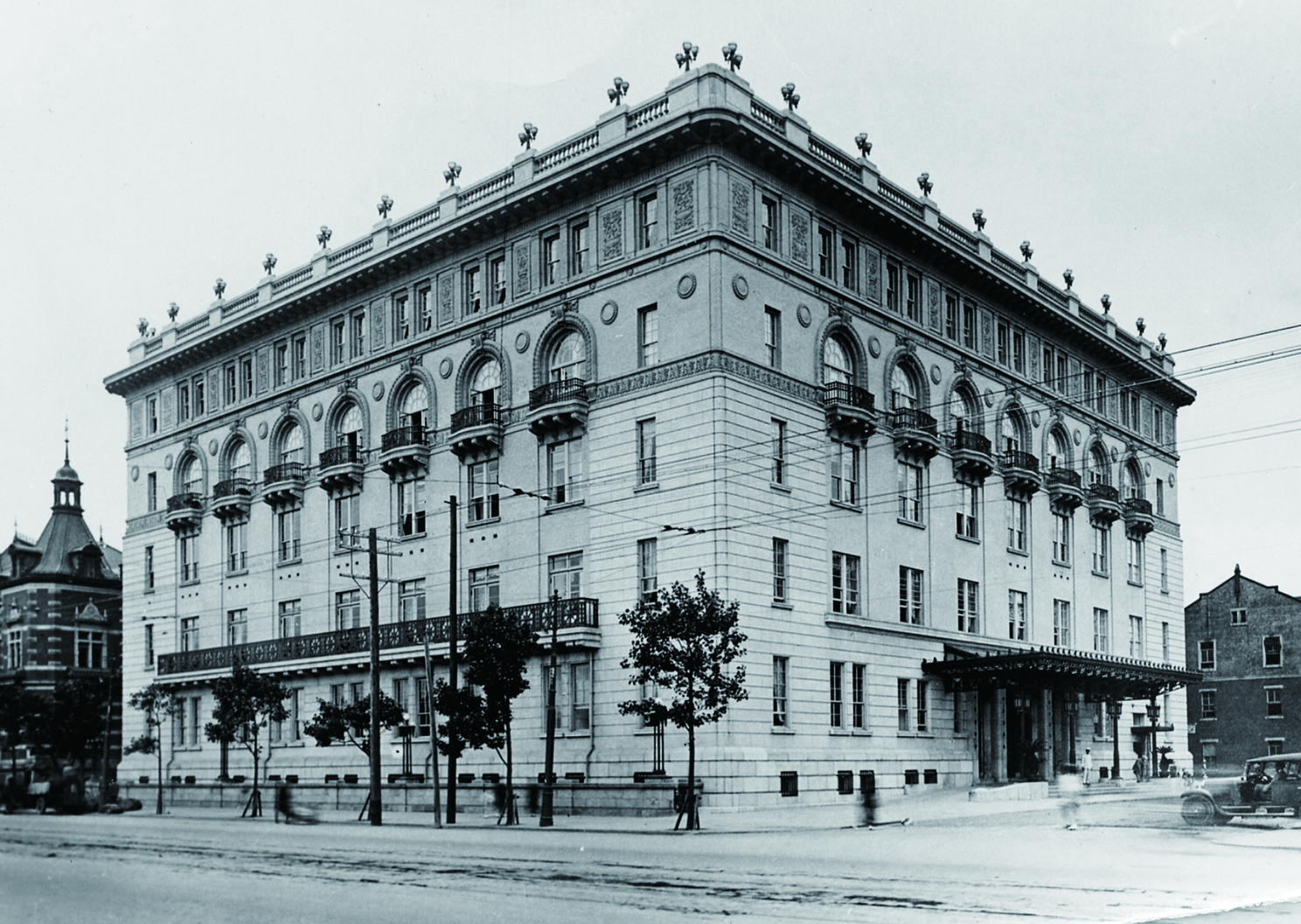
The original Tokyo Kaikan building
1934: French Restaurant Prunier Opens
Tokyo Kaikan was the forefront of Western style and cuisine, opening the first Western-style seafood restaurant in Japan. The chef, Tokusaburo Tanaka, started his culinary career at age 13 in Tokyo and studied his craft in Paris’ finest restaurants, including The Ritz and Prunier. It was the latter that inspired the name of Tokyo Kaikan’s finest French restaurant. During Tanaka’s time at Prunier, he introduced numerous dishes, including bonne femme, a dish featuring sole steamed in white wine.
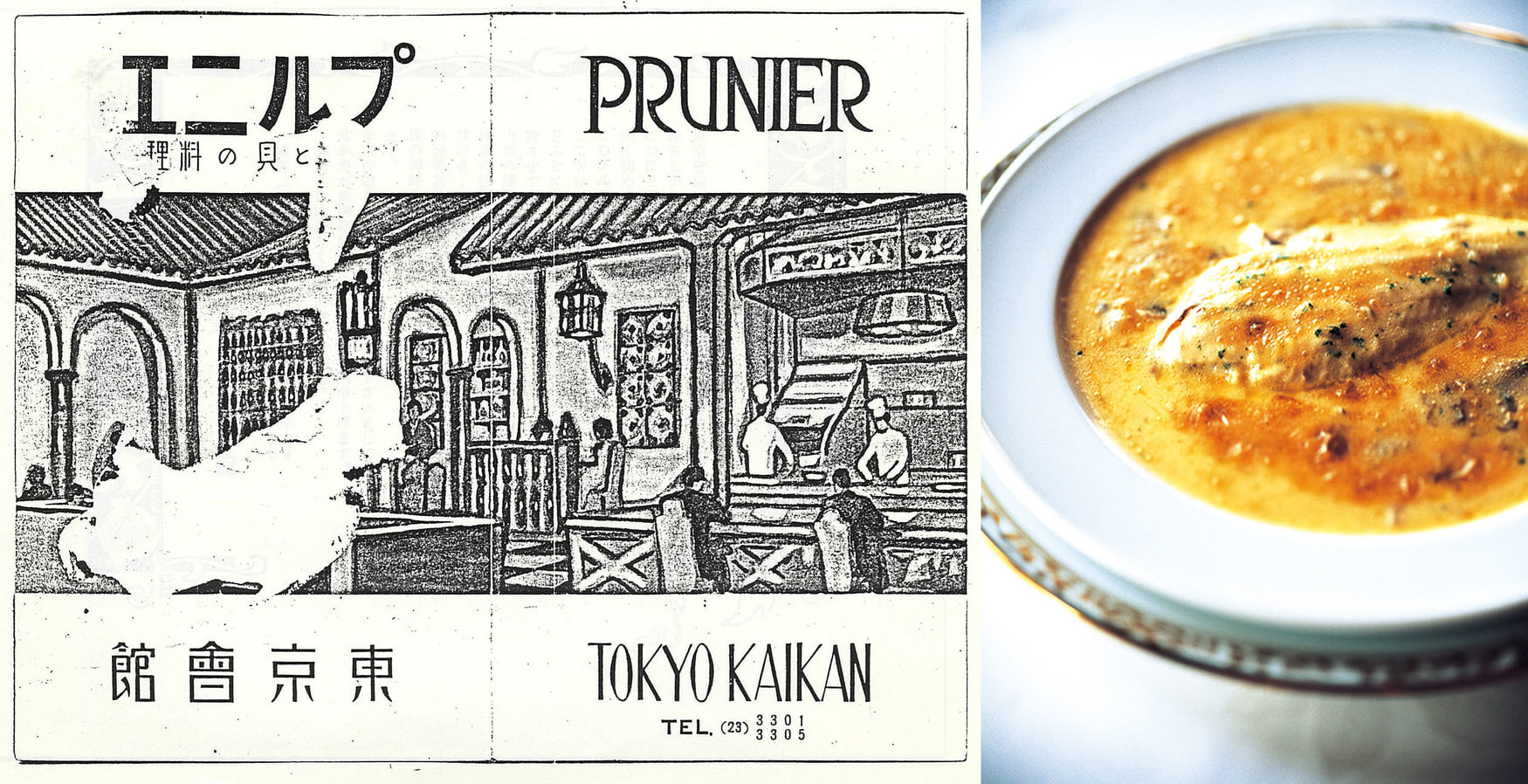
Restaurant Prunier and “Bonne Femme”
1945: Tokyo Kaikan Becomes an American Club
Though damaged during World War II, Tokyo Kaikan was seized as a part of the American occupation of Japan and operated as the American Club of Tokyo until occupation ended in 1952. Due to its convenient location near the US military’s General Headquarters (GHQ), it attracted a lot of soldiers, including high level officers. It was around this time the Kaikan gin fizz was born. By adding milk to a standard gin fizz cocktail, and serving it in a plain clear glass, it meant GIs boozing from the early morning could remain undetected.
1952: The First Imperial Event
The daughter of Emperor Hirohito and Nagako (posthumously known as Emperor Showa and Empress Kojun), Atsuko, had her wedding reception here when she married Takamasa Ikeda. It was the first imperial event of its kind and since then Tokyo Kaikan has been a beloved venue for many similar occasions.
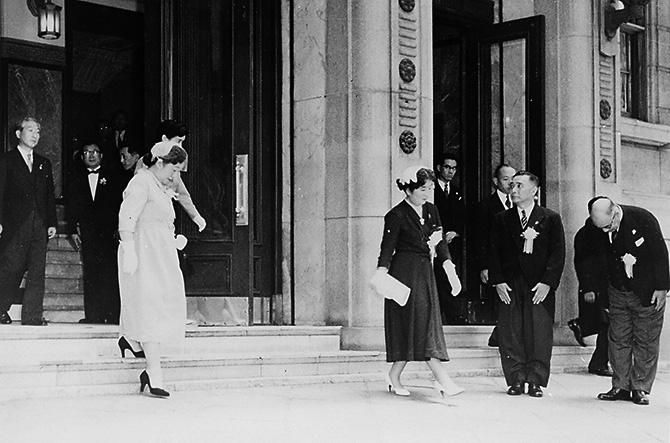
Atsuko and Takamasa Ikeda’s Wedding Reception at Tokyo Kaikan
1955: The First French Cooking School
In 1955, Tokyo Kaikan opened the first cooking school for French food that was open to the public. The course was an instant success, with young women from high status families attending in large numbers to improve their prospects for marriage.
1964: Tokyo Olympics
With the influx of tourists during the 1964 Tokyo Olympics, the French government seized the opportunity to spread the charm of French cuisine by opening a temporary restaurant named Ile de France. Though it was only open for three months, it was exceedingly popular, in part, because of the presence of Chef Raymond Oliver, owner of France’s historical restaurant, Le Grand Véfour. His influence over Tokyo Kaikan’s classic French cuisine can still be seen today.
1971: Tokyo Kaikan Gets a Facelift
By the early 1970s it was time for Tokyo Kaikan to update its look. The halls maintained a classic look with some contemporary splashes, most visible in the use of bright colors and lively décor. Genichiro Inokuma, a figurative artist also known for abstract paintings designed the giant chandelier in the lobby, dubbed Kinkan (The Gold Ring), as well as a bright mosaic mural inspired by urban cityscapes.
1975: Queen Elizabeth II Visits
In 1971, when Emperor Showa toured Europe, two of Tokyo Kaikan’s finest aided in the organization of a banquet at the Japanese Embassy in London. Chef Saburo Nagai and butler Kinsaku Okano were also key members in planning the reciprocal visit of the Queen of England Elizabeth II and Prince Philip to a reception held at Tokyo Kaikan in 1975.
The Grand Reopening of Tokyo Kaikan
After four years of renovations, Tokyo Kaikan is set to relaunch on January 8. Here’s what to look forward to…
Seasonal Exterior
The 72-meter-long outer façade boasts details inspired by the four seasons. Using designs from both the first and second generations of Tokyo Kaikan, five symbols represent each of the seasons, with a total of 20 reliefs across its length. Elaborate ironworks depicting wisteria, chrysanthemums, camellias and more offer an eye-catching and sophisticated new look to the building’s exterior.
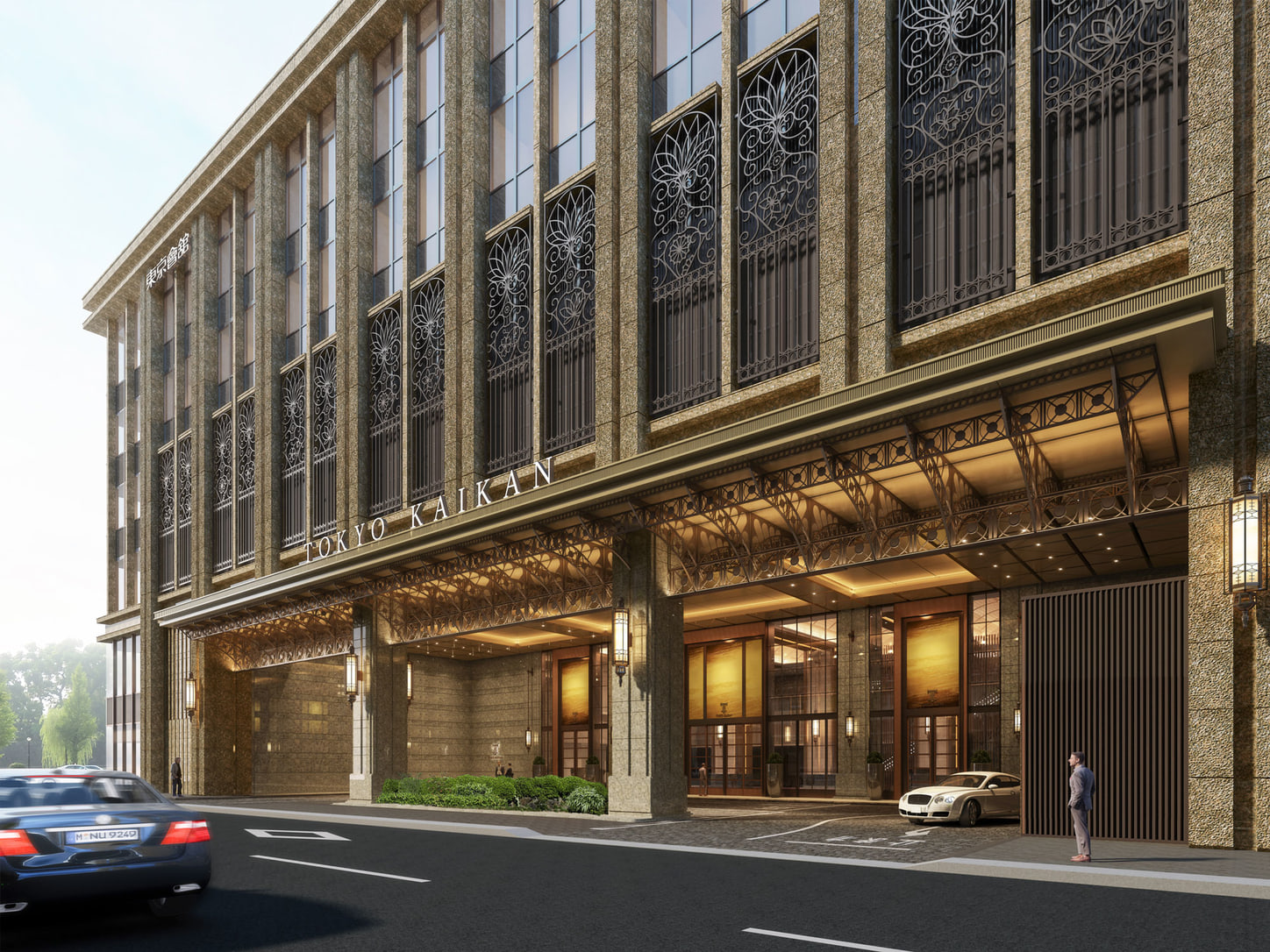
The New Exterior
A Beloved Chandelier Makes a Comeback
The first-generation Tokyo Kaikan boasted three massive chandeliers in its Rose Room banquet hall. Hailing from the Czech Republic, each chandelier weighed one ton and was made with intricate detailing, much of which is impossible to recreate today. Even so, one chandelier remains in service as a focal point for wedding photos taken here.
…And Much Much More
There are countless homages to the previous incarnations of Tokyo Kaikan throughout the new building waiting to be explored. The venue also boasts an exceptional view of the Imperial Palace from both the chapel and its banquet halls. Furthermore, there will be a selection of eight restaurants and shops, two of which are completely new.
For Tokyo Kaikan contact information, see our Concierge listing.
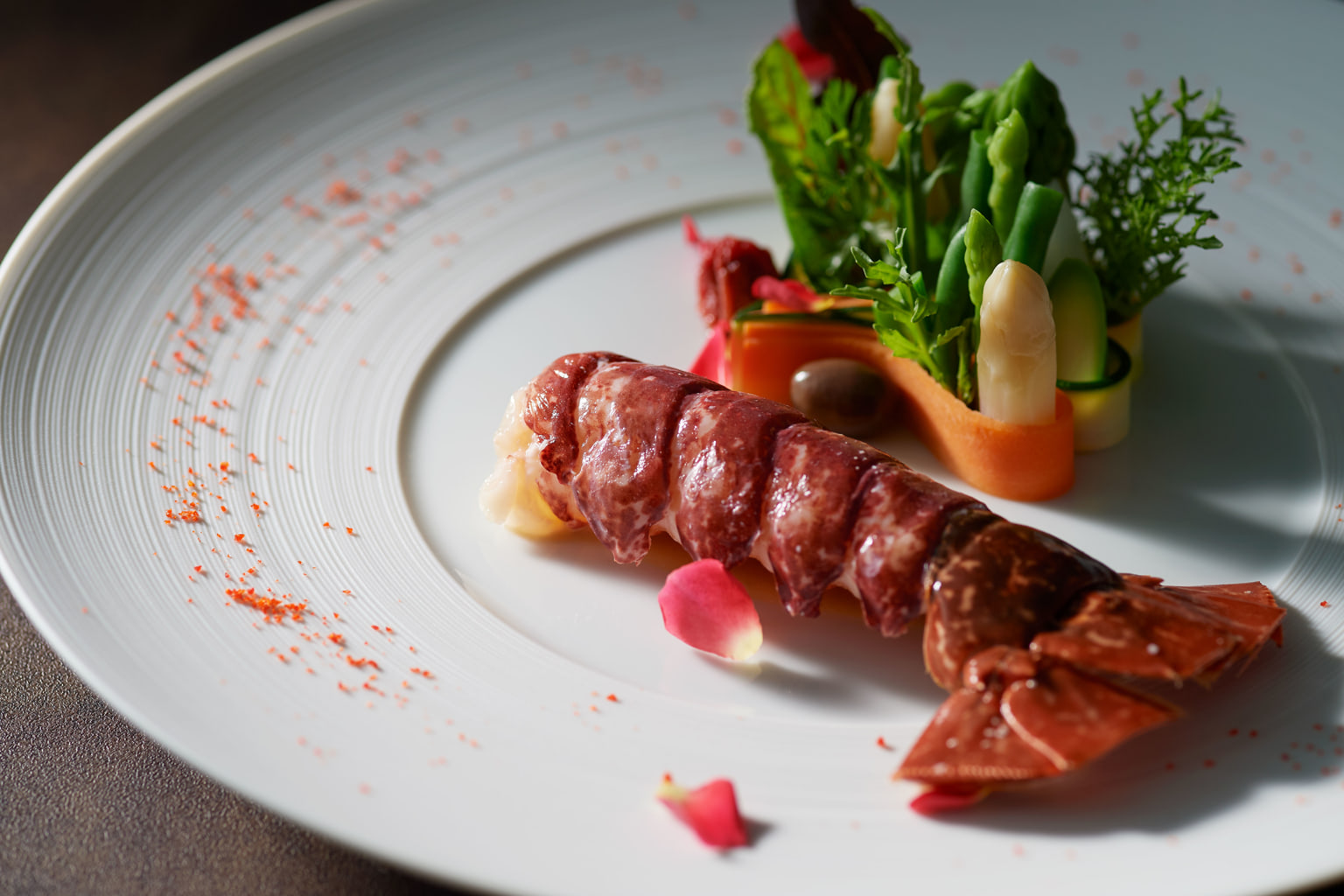
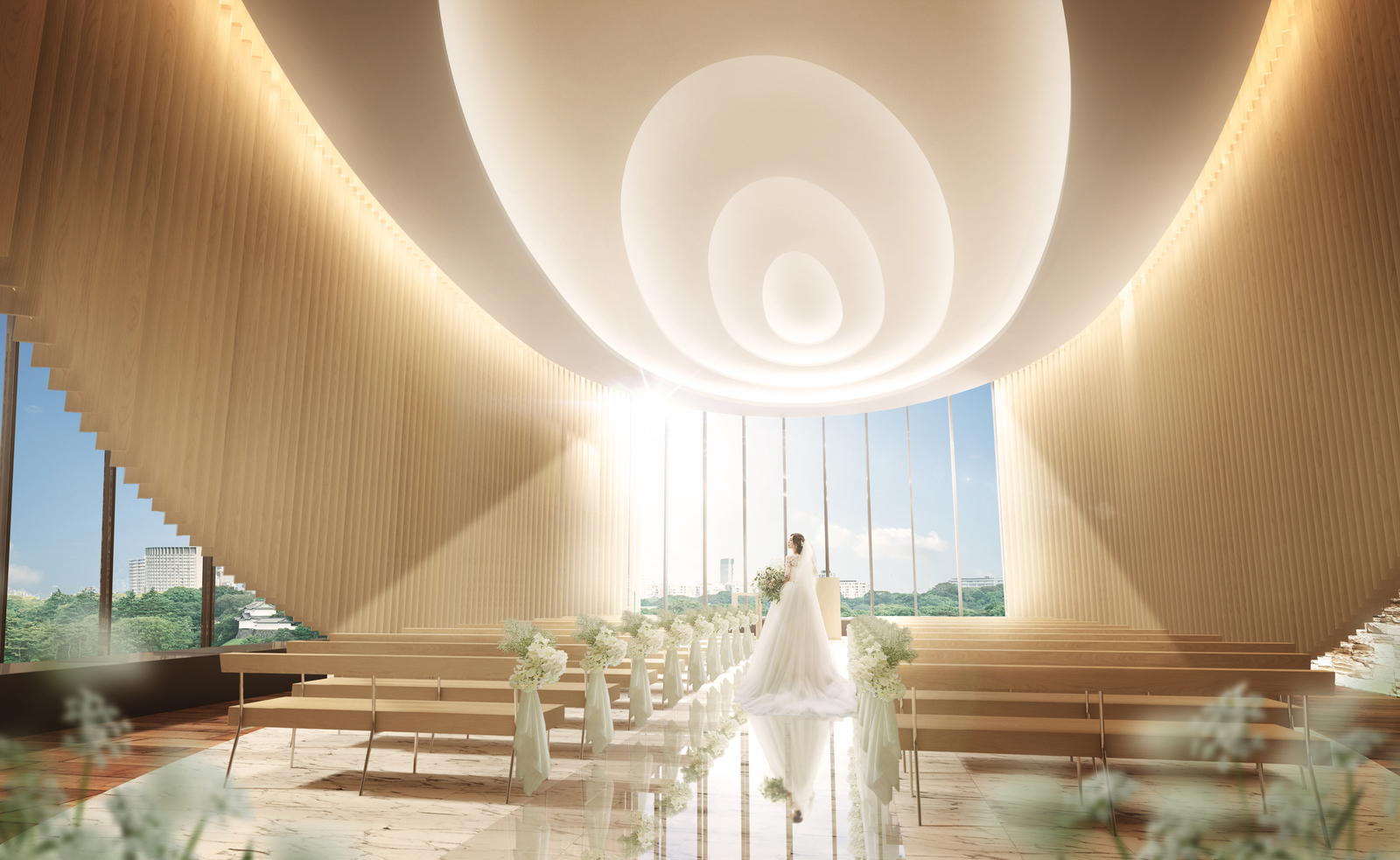
Sponsored Post

